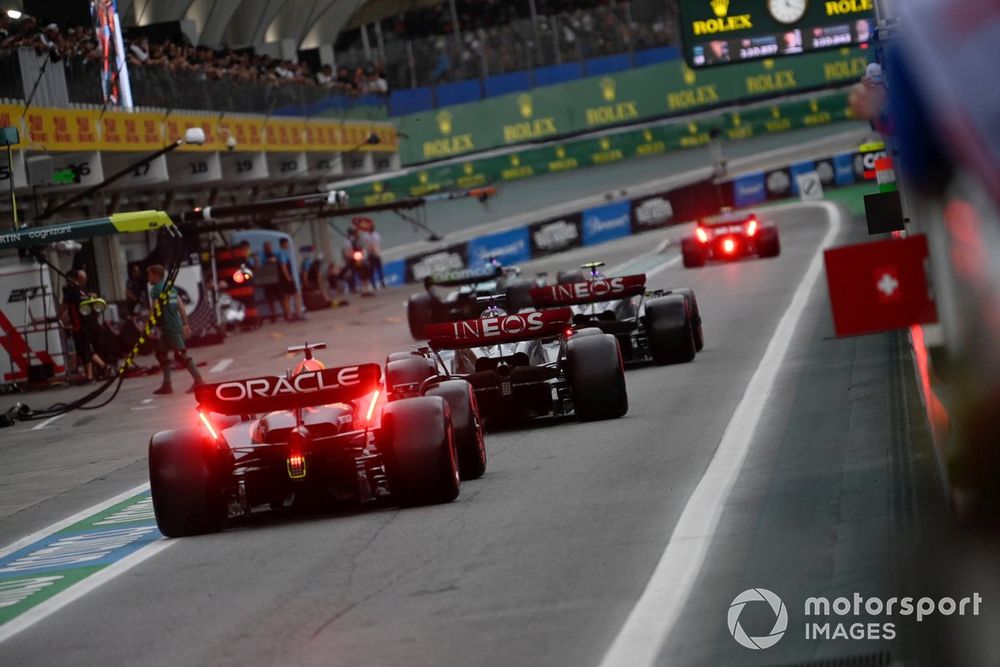Following work conducted by FIA specialists over recent weeks, the governing body has developed new software that will trigger the rear red rain lights to come on when conditions demand they are required.
The idea is that as soon as FIA’s race control deems that track conditions are officially ‘Low Grip’ because of rain, then software will ensure that the rain lights come on.
Up until now, drivers have had to manually switch on their rain lights – which means sometimes there is the risk of them not being activated when conditions have deteriorated.
In event notes sent out by F1 race director Niels Wittich on Thursday, teams were informed that after Friday’s opening free practice session, the short test will kick in to see if the software introduction has worked.
Wittich said: “After all cars have taken the chequered flag, a Double Yellow Sector and Low Grip will be activated. After approximately 20 seconds Low Grip will be disabled. Another 10 seconds later VSC will be activated. After approximately 20 seconds VSC will be disabled.”
The short test should be enough for the FIA to judge if the software changes worked without trouble. If the test is successful then the likelihood is that the changes can be implemented full time for next year.
Photo by: Mark Sutton / Motorsport Images
George Russell, Mercedes F1 W14, Max Verstappen, Red Bull Racing RB19, in the pit lane
The rain light test comes as part of a wider push by the FIA to try to improve visibility for drivers in wet conditions – with spray thrown up from the current ground effect cars having been a problem that F1’s bosses have been looking at addressing.
The FIA conducted a test of wheel arches earlier this year aimed at reducing spray, but this first design did not prove effective enough in reducing spray.
Speaking earlier this year, FIA deputy president of sport Robert Reid said: “There is a challenge with the new aerodynamics in F1, and it’s something that we’re trying to solve there.
“Anything we can do to reduce the spray, and increase the visibility, is going to be something that we are definitely working on.
“There’s no particular solution at the moment. But, as you saw in F1, there was the first learning step towards some solutions.
“I know there was a bit of criticism, and I read it was a failure, but in any of these situations, you’ve got to try things. And that’s exactly what we did.”
…
Click Here to Read the Full Original Article at Autosport.com – Formula 1 – Stories…

